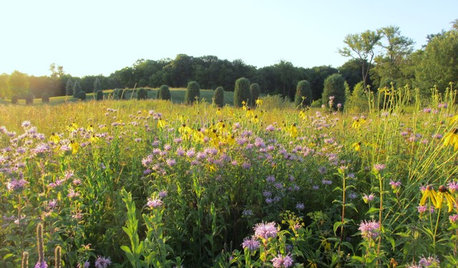Cross pollination of beans, corn, visible in first year?
marcguay
9 years ago
Related Stories

SUMMER FRUITS AND VEGETABLESHow to Grow Your Own Fresh, Sweet Corn
Here's how to plant and care for your own mini cornfield
Full Story
GARDENING GUIDES10 Easy Edibles for First-Time Gardeners
Focus on these beginner-friendly vegetables, herbs, beans and salad greens to start a home farm with little fuss
Full Story
KITCHEN APPLIANCESConsidering a New Kitchen Gadget? Read This First
Save money, time and space by learning to separate the helpers from the hassles
Full Story
FARM YOUR YARDHello, Honey: Beekeeping Anywhere for Fun, Food and Good Deeds
We need pollinators, and they increasingly need us too. Here, why and how to be a bee friend
Full Story
EDIBLE GARDENSGarden BFFs? Why Your Vegetables Are Begging for Companion Plants
Foster friendships among plants for protection from pests, pollination support and color camaraderie
Full Story
GARDENING GUIDESAttract Hummingbirds and Bees With These Beautiful Summer Flowers
Roll out a welcome mat for pollinators to keep your landscape in balance and thriving
Full Story
GARDENING GUIDESWhat Prairies Teach Us About Garden Design
Wild spaces offer lessons for home gardeners about plants, pollinators and the passage of time
Full Story
GARDENING GUIDES10 Tips for Beginning Gardeners
With a simple sketch, basic tools and the right plants, you’ll be on your way to growing your first flowers or edibles
Full Story
GARDENING FOR BUTTERFLIESGardening for the Bees, and Why It’s a Good Thing
When you discover how hard bees work for our food supply, you may never garden without them in mind again
Full Story
EDIBLE GARDENSSummer Crop: How to Grow Blueberries
Plant blueberries in spring or fall for garden beauty through three seasons — and a sweet superfood in summer
Full StoryMore Discussions






morpheuspa (6B/7A, E. PA)
marcguayOriginal Author
Related Professionals
Fillmore Landscape Architects & Landscape Designers · Wixom Landscape Architects & Landscape Designers · Brooklyn Center Landscape Architects & Landscape Designers · Allentown Landscape Contractors · Cary Landscape Contractors · Fort Hunt Landscape Contractors · Fort Payne Landscape Contractors · Haverhill Landscape Contractors · Middleton Landscape Contractors · Pleasant Grove Landscape Contractors · West Haverstraw Landscape Contractors · West Palm Beach Landscape Contractors · Lauderdale Lakes Landscape Contractors · Columbia Roofing & Gutters · Oklahoma City Roofing & GuttersmarcguayOriginal Author
morpheuspa (6B/7A, E. PA)
little_minnie
ZachS. z5 Platteville, Colorado
marcguayOriginal Author
marcguayOriginal Author
little_minnie